Deck 8: Democrats and Whigs: Democracy and American Culture, 1820-1840
Question
Question
Question
Question
Question
Question
Question
Question
Question
Question
Question
Question
Question
Question
Question
Question
Question
Question
Question
Question
Question
Question
Question
Question
Question
Question
Question
Question
Question
Question
Question
Question
Question
Question
Question
Question
Question
Question
Question
Question
Question
Question
Question
Question
Question
Question
Question
Question
Question
Question

Unlock Deck
Sign up to unlock the cards in this deck!
Unlock Deck
Unlock Deck
1/50
Play
Full screen (f)
Deck 8: Democrats and Whigs: Democracy and American Culture, 1820-1840
1
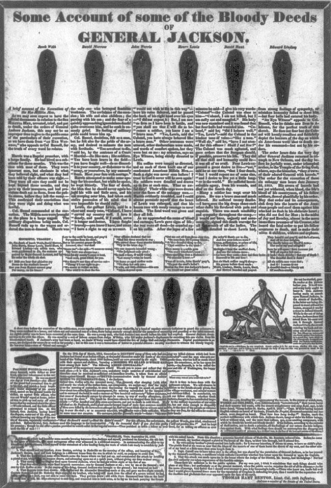
Who was chiefly responsible for formulating the political strategy that managed to get Andrew Jackson elected president in 1828?
A) Henry Clay
B) William Crawford
C) John Calhoun
D) Martin Van Buren
Martin Van Buren
2

Which of the following was a pioneering technique used by Jackson's supporters to get his message to the public and secure his election as president?
A) stump speeches
B) organization of political clubs
C) fundraisers such as banquets and the sale of campaign knickknacks
D) rallies and parades
fundraisers such as banquets and the sale of campaign knickknacks
3
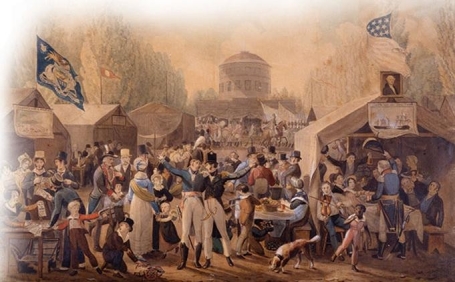
The scene in John Lewis Krimmel's Fourth of July in Center Square more than likely influenced the conservative lawyer and judge James Kent to call for .
A) retention of property requirements for voting
B) universal white male suffrage
C) suffrage for African Americans, women, and Indians
D) additional admission of states from the Western territories
retention of property requirements for voting
4
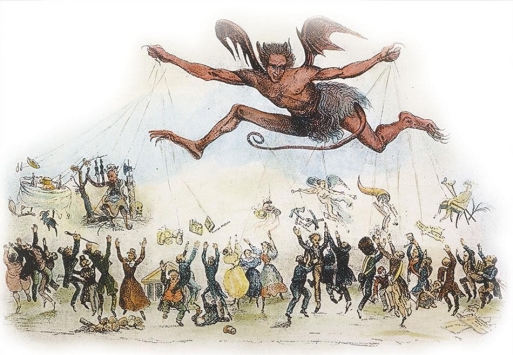
Why did President Jackson defend Secretary of War John Eaton's wife Peggy when Washington society began to spread rumors about her potentially promiscuous lifestyle?
A) He sympathized with her because his late wife dealt with the same type of rumors.
B) He admired her tenacity to stand up to his nemesis John C. Calhoun's wife.
C) He was grateful to her for serving as his White House hostess after the death of his wife.
D) He felt connected to her because he too had gone through two marriages.

Unlock Deck
Unlock for access to all 50 flashcards in this deck.
Unlock Deck
k this deck
5
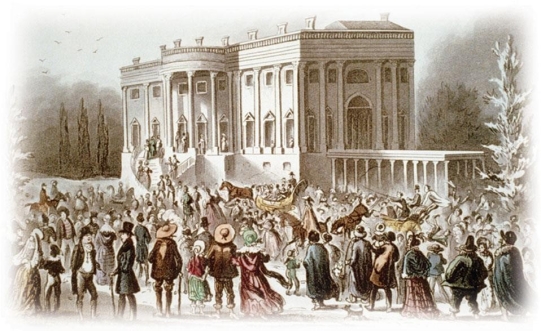
What was the spoils system?
A) the aggressive use of the military in foreign relations
B) the granting of strong influence to large land speculators
C) the custom of giving government jobs to supporters of the victorious party
D) the practice of expanding white male universal suffrage to non-landowners

Unlock Deck
Unlock for access to all 50 flashcards in this deck.
Unlock Deck
k this deck
6
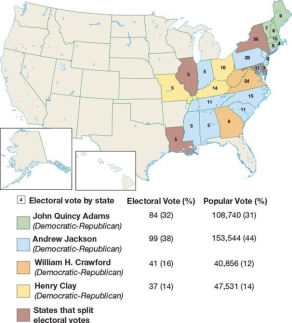
What theme was evident in this map as shown by the number of popular and electoral votes cast in the 1824 presidential election?
A) an appeal to the economic interests of working men
B) a desire to return to the republican values of the Founding Fathers
C) an apparent rejection of the elite in favor of the common man as a leader
D) the supremacy of propertied interests

Unlock Deck
Unlock for access to all 50 flashcards in this deck.
Unlock Deck
k this deck
7

The Force Bill gave Jackson the power to .
A) use military power to collect revenues
B) engage in an undeclared naval war with Britain
C) remove the Cherokees from their homelands
D) reward his supporters with political appointments

Unlock Deck
Unlock for access to all 50 flashcards in this deck.
Unlock Deck
k this deck
8

Jackson's supporters nicknamed him because he stoutly defeated the British during the Battle of New Orleans in 1815.
A) "Young Hickory of the Stump"
B) "Old Hickory"
C) "Old Rough and Ready"
D) "The New George Washington"

Unlock Deck
Unlock for access to all 50 flashcards in this deck.
Unlock Deck
k this deck
9

What was the doctrine of nullification?
A) the belief that states should secede from the Union if federal power becomes too great
B) the belief that states have the right to void federal laws deemed unconstitutional
C) the belief that only federal courts have the final word on the constitutionality of legislation
D) the belief that all legislation should be tested in court before being considered law

Unlock Deck
Unlock for access to all 50 flashcards in this deck.
Unlock Deck
k this deck
10

What similarity does George Caleb Bingham's painting Stump Speaking or the County Canvass and the illustration from A Narrative of the Life of David Crockett share regarding the new democratic style of politics that began to transform America in the 1820s?
A) Both images reveal that African Americans, women, and American Indians gained political power during the 1820s.
B) Both pictures appealed to urban voters in New England and the mid-Atlantic.
C) Both scenes show that common voters from the West exemplified democracy with egalitarian ideals.
D) Both illustrations reflect aristocratic values associated with the political system of the late 1700s and early 1800s.

Unlock Deck
Unlock for access to all 50 flashcards in this deck.
Unlock Deck
k this deck
11

How does this cartoon of a demonic Andrew Jackson dangling the spoils of victory before eager office seekers contradict what actually happened during his presidential administration?
A) Jackson limited his political appointments to a small elite group of well-educated men.
B) Jackson replaced every federal officeholder with his own political supporters.
C) Jackson was morally opposed to doling out federal office jobs to his supporters.
D) Jackson only replaced about 20 percent of current officeholders with his own supporters.

Unlock Deck
Unlock for access to all 50 flashcards in this deck.
Unlock Deck
k this deck
12

Because he won the popular vote but lost his bid to be president, Andrew Jackson called the election of 1824 a "corrupt bargain" due to the fact that .
A) the House of Representatives chose Henry Clay as president
B) he would have won the election if property requirements for voting were still in place
C) William Crawford won the Electoral College despite Jackson's higher numbers in the popular vote
D) former candidate Henry Clay threw his support to Adams in exchange for an appointment as secretary of state

Unlock Deck
Unlock for access to all 50 flashcards in this deck.
Unlock Deck
k this deck
13

John Quincy Adams's campaign used printer John Binn's "Coffin Handbill" as a way to show that opponent Andrew Jackson was unfit to be president because he .
A) was a brutal despot who had no control over his actions
B) would probably die in office because of his advanced age
C) was responsible for the deaths of many Indians during the Creek Wars
D) brutally executed British prisoners of war after the Battle of New Orleans

Unlock Deck
Unlock for access to all 50 flashcards in this deck.
Unlock Deck
k this deck
14

The most important political figure to associate the West with democracy was .
A) David Crockett
B) Andrew Jackson
C) John Quincy Adams
D) George Caleb Bingham

Unlock Deck
Unlock for access to all 50 flashcards in this deck.
Unlock Deck
k this deck
15
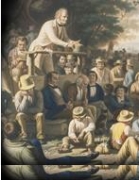

How does the image of Daniel Webster on the right contrast to that of the stump speaker on the left?
A) Webster is portrayed as a shady character, while the stump speaker reflects enlightenment.
B) Webster speaks for states' rights, while the stump speaker promotes a strong union.
C) Webster stands as a model of virtue, while the stump speaker bends to the will of the people.
D) Webster speaks for the common man, while the stump speaker represents aristocrats.

Unlock Deck
Unlock for access to all 50 flashcards in this deck.
Unlock Deck
k this deck
16
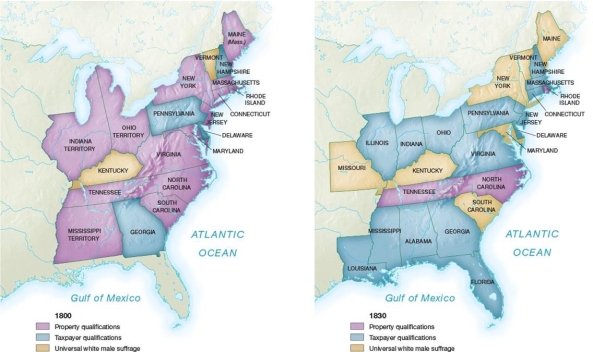
These maps showing data from 1800 and 1830 reveal that, in this 30-year period, democracy in America .
A) remained stagnant because of the requirement to own property
B) expanded due to universal white male suffrage
C) grew because of suffrage extended to African Americans and Indians
D) declined as stricter property-owning requirements were adopted by newer states

Unlock Deck
Unlock for access to all 50 flashcards in this deck.
Unlock Deck
k this deck
17
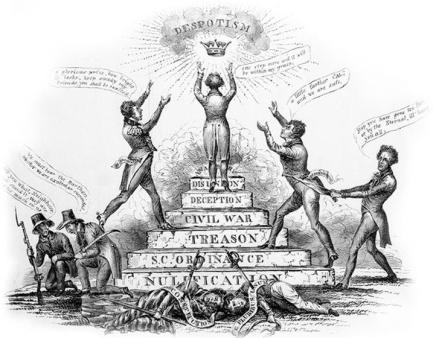
What message about President Jackson, who is standing on the right of this image, does the cartoonist convey regarding the Nullification Crisis in South Carolina?
A) Jackson supported Calhoun's position on giving the states more power.
B) Jackson did not believe that the Nullification Crisis was a threat to the Union.
C) Jackson thought that South Carolina's position on nullification was an honorable act.
D) Jackson threatened to use force if South Carolina nullified the Tariff Act of 1832.

Unlock Deck
Unlock for access to all 50 flashcards in this deck.
Unlock Deck
k this deck
18

How did this image of the crowd in front of the White House during Jackson's first inauguration promote fear among many of his opponents?
A) They were concerned that the population of the United States was growing too quickly.
B) They complained that Jackson had ushered in mob rule.
C) They felt that more white males should participate in the electoral process.
D) They believed that the United States had become too aristocratic for the common man.

Unlock Deck
Unlock for access to all 50 flashcards in this deck.
Unlock Deck
k this deck
19

This political broadside used in the election of 1824 showed presidential candidate John Quincy Adams's belief that the federal government should support greater economic development through .
A) elimination of the property-owning requirement for voting
B) increased trade with Britain
C) Henry Clay's American System
D) the abolition of slavery

Unlock Deck
Unlock for access to all 50 flashcards in this deck.
Unlock Deck
k this deck
20

After completing a tour of the United States, French nobleman Alexis de Tocqueville noted in
Democracy in America that American society was more than European society.
A) ignorant
B) intelligent
C) sophisticated
D) egalitarian

Unlock Deck
Unlock for access to all 50 flashcards in this deck.
Unlock Deck
k this deck
21
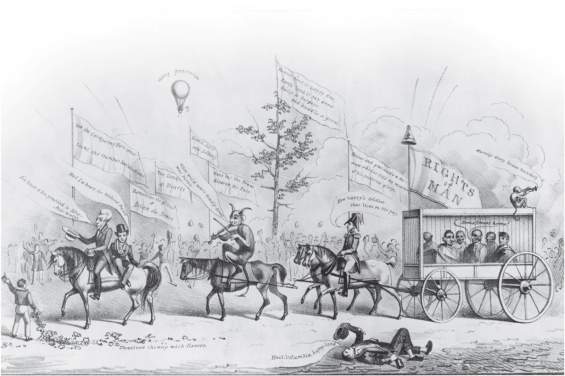
What did the Indian Removal Act of 1830 give Andrew Jackson the authority to do?
A) negotiate a treaty with the Cherokee
B) exchange Indian lands within the states for land west of the Mississippi
C) represent the Cherokee in court in Georgia
D) remove the rights of Indian tribes to seek legal redress in court

Unlock Deck
Unlock for access to all 50 flashcards in this deck.
Unlock Deck
k this deck
22
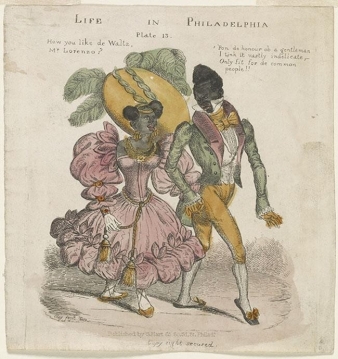
What happened when gold was discovered on Cherokee lands in Georgia in 1828?
A) The Cherokee tribe became extremely wealthy.
B) The Cherokee formed an alliance with the state of Georgia to mine the gold.
C) Georgia passed a law denying the Cherokee legal authority over their land.
D) A riot broke out, resulting in both white and Cherokee casualties.

Unlock Deck
Unlock for access to all 50 flashcards in this deck.
Unlock Deck
k this deck
23

What constitutional issue was central to both Cherokee Nation v. Georgia (1830) and
Worcester v. Georgia (1832)?
A) Can Indian land be located within the borders of a U.S. state?
B) Can the United States change the terms of its treaty with the Cherokee?
C) Which has authority over Indian land: state law or federal law?
D) Are the Cherokee a sovereign nation or subjects of the United States?

Unlock Deck
Unlock for access to all 50 flashcards in this deck.
Unlock Deck
k this deck
24

What makes this cartoon about Jackson's Indian policy ironic?
A) Jackson was a religious man but is shown to be in league with the devil.
B) The Native Americans are in a cage that flies a flag with the phrase "Rights of Man."
C) Native Americans actually walked to their new homes west of the Mississippi.
D) Clergymen and missionaries called for ethical treatment of Indians yet the President refused to do so.

Unlock Deck
Unlock for access to all 50 flashcards in this deck.
Unlock Deck
k this deck
25
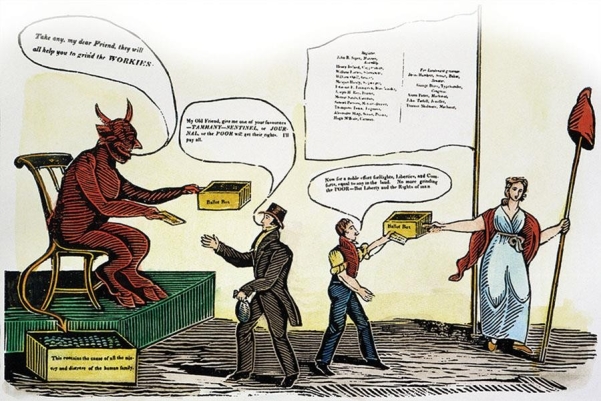
Why did Jackson's Bank Veto Speech appeal to the more "humble members of society"?
A) He portrayed the Bank as a tool of those who used their wealth and influence to gain unfair advantages.
B) He condemned the Bank for not being cautious when lending money.
C) He advocated a combatively radical approach similar to the Workies' approach in dealing with the Bank.
D) He charged Henry Clay as being a corrupt agent under the Bank's power.

Unlock Deck
Unlock for access to all 50 flashcards in this deck.
Unlock Deck
k this deck
26
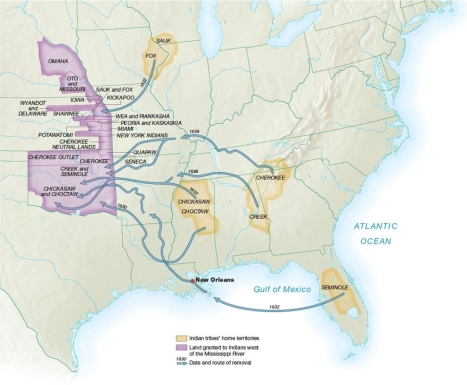
This map addressing the Indian removal issues of the 1830s suggests that .
A) President Jackson disregarded Chief Justice Marshall's decision in Worchester v. Georgia
B) the affected tribes moved exclusively through land routes to reach their new lands
C) Indian removal was limited to the "Five Civilized Tribes"
D) Indian removal for all affected tribes took place simultaneously

Unlock Deck
Unlock for access to all 50 flashcards in this deck.
Unlock Deck
k this deck
27

Thomas Skidmore advocated using large inheritance taxes in his book The Rights of Man to Property! in order to .
A) return land seized from the Indians during the 1820s and 1830s
B) abolish property requirements for suffrage
C) grant parcels of land to free African Americans and poor whites
D) equalize wealth that prevented a monied aristocracy

Unlock Deck
Unlock for access to all 50 flashcards in this deck.
Unlock Deck
k this deck
28
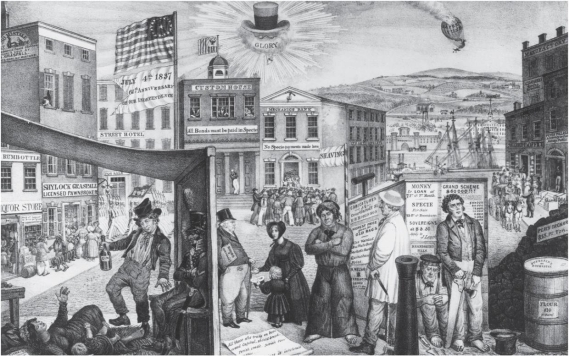
As land speculation went out of control in 1836, Jackson adopted the Specie Circular, which required that _.
A) settlers who could not afford to purchase land from the government could get easy terms of credit from state banks
B) all land purchases from the government be paid with hard currency backed by gold and silver
C) the government stop selling land to speculators
D) all sales of federal land be done through bank notes

Unlock Deck
Unlock for access to all 50 flashcards in this deck.
Unlock Deck
k this deck
29

In the cartoon The Times, Andrew Jackson's hat, glasses, and clay pipe superimposed over the sun symbolize Jackson's .
A) benevolence toward the nation
B) responsibility for the Panic of 1837
C) vision for ending the economic crisis
D) actions that made America glorious again

Unlock Deck
Unlock for access to all 50 flashcards in this deck.
Unlock Deck
k this deck
30

When confronted with President Jackson's Indian removal policy, most Cherokee supported Principal Chief John Ross in opting to .
A) agree to relocate but negotiate for lands within the boundaries of the United States
B) reject relocation and prepare for a military fight to retain their land
C) reject relocation and try to rally congressional support against the state of Georgia
D) agree to relocate but negotiate for a more humane method of travel to the new lands

Unlock Deck
Unlock for access to all 50 flashcards in this deck.
Unlock Deck
k this deck
31

How does this pro-Workie political cartoon portray the average workingman in America?
A) as a corrupt person selling his vote to the devil
B) as a suppressed individual lacking the privileges endowed to other citizens
C) as a loyal supporter of Andrew Jackson and the Democratic Party
D) as an honest person independently exercising his right to vote while invoking liberty

Unlock Deck
Unlock for access to all 50 flashcards in this deck.
Unlock Deck
k this deck
32

What political technique first used by Anti-Masons was later adopted by mainstream parties?
A) selecting a presidential candidate at a national nominating convention
B) establishing a nationwide network to keep party members on message
C) using presidential primaries as testing grounds for presidential candidates
D) organizing fundraising events for party candidates

Unlock Deck
Unlock for access to all 50 flashcards in this deck.
Unlock Deck
k this deck
33
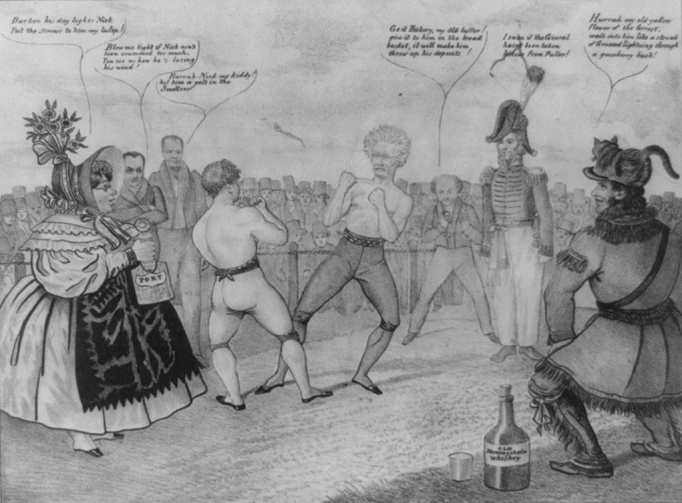
What was the main reason why some of the bystanders, such as Mother Bank on the left and the frontiersman on the right, were included in the lithograph Set To Between Old Hickory and Bully Nick?
A) to show that boxing was a popular spectator sport in 1830s America
B) to contrast Jacksonian democracy with the aristocratic bank
C) to highlight the fact that alcoholic beverages were popular with all social groups
D) to represent the interests of the East and West

Unlock Deck
Unlock for access to all 50 flashcards in this deck.
Unlock Deck
k this deck
34

Even though property restrictions were banned in several states from the North and West during the 1820s to increase universal white male suffrage, why did many African Americans in these states lose their right to vote?
A) These states required African Americans to pay higher poll taxes.
B) These states adopted a high property requirement for African Americans so they could vote.
C) These states required that African Americans had to be literate in order to vote.
D) These states adopted new laws that only allowed African Americans to vote in local elections.

Unlock Deck
Unlock for access to all 50 flashcards in this deck.
Unlock Deck
k this deck
35
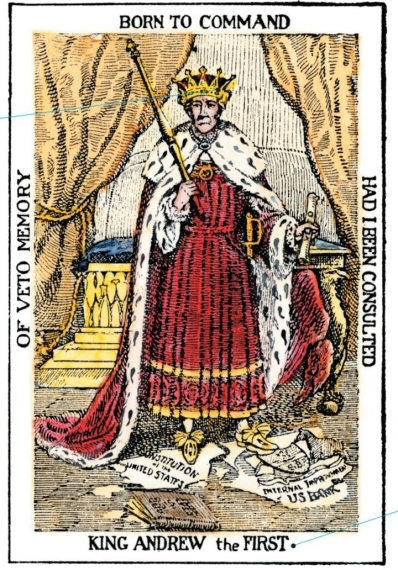
What trait associated with Andrew Jackson does the satirist use to describe him in the cartoon King Andrew the First?
A) regal
B) democratic
C) tyrannical
D) patriotic

Unlock Deck
Unlock for access to all 50 flashcards in this deck.
Unlock Deck
k this deck
36

What was one of the successful reforms achieved by the Workies?
A) the use of inheritance taxes to equalize wealth
B) the abolition of imprisonment for debt
C) shortened work days for industrial workers
D) full enfranchisement of white males

Unlock Deck
Unlock for access to all 50 flashcards in this deck.
Unlock Deck
k this deck
37

What was the major campaign issue in the 1832 presidential election between Andrew Jackson and Henry Clay?
A) the corruption associated with the spoils system
B) Jackson's forcible eviction of the Cherokee from their lands in Georgia
C) Jackson's veto of the charter of the Bank of the United States
D) the economic depression resulting from the Bank of England's decision to restrict credit

Unlock Deck
Unlock for access to all 50 flashcards in this deck.
Unlock Deck
k this deck
38
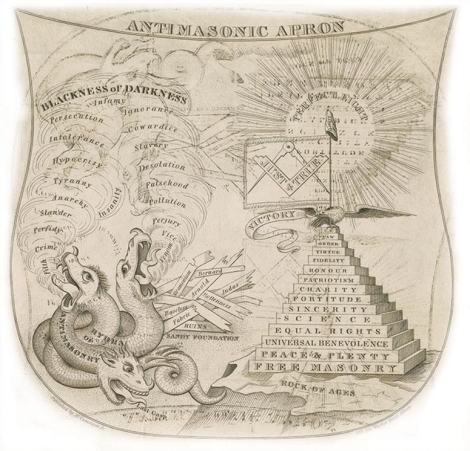
Which organization created this image on an apron and for what reason?
A) Anti-Masons did this to show they were more influential than Freemasons.
B) Freemasons did this to contrast their enlightened values to the Anti-Masonic vices.
C) Jackson's Democratic Party did this to show the evils of both Freemasons and Anti-Masons.
D) The Workies did this to show they were in collaboration with the Anti-Masons.

Unlock Deck
Unlock for access to all 50 flashcards in this deck.
Unlock Deck
k this deck
39

How does this cartoon lampoon the lifestyles of free blacks who were living in the North and West in the 1820s?
A) The couple is ridiculed for trying to pretend that they were members of a higher class.
B) The couple is dressed in old-fashioned styles that were typical of the early eighteenth century.
C) The cartoon promises a grand lifestyle for slaves who could run away from the South.
D) The cartoon implies that free blacks had few opportunities for success.

Unlock Deck
Unlock for access to all 50 flashcards in this deck.
Unlock Deck
k this deck
40

What do the Cherokee cases reveal about the limits of judicial power?
A) The president must follow the decision made by the Supreme Court.
B) A Supreme Court decision cannot supplant a decision from a lower court.
C) Presidential power superseded judicial power in these two cases.
D) The Supreme Court had no jurisdiction over a sovereign Cherokee nation.

Unlock Deck
Unlock for access to all 50 flashcards in this deck.
Unlock Deck
k this deck
41
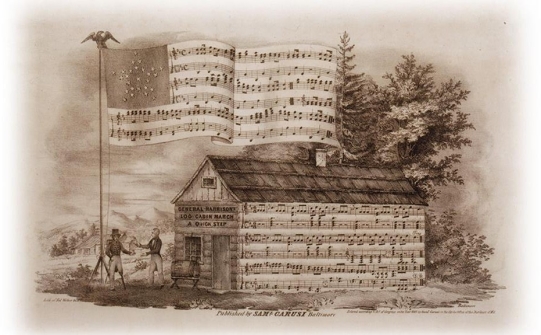
Why did the Whig Party appeal to women in the United States during the 1840 campaign?
A) The Whigs promised to give women the right to vote.
B) Southern Whigs were in favor of abolishing slavery.
C) The Whigs promoted family and Christian values.
D) The Whigs were in favor of giving women equal pay for equal work.

Unlock Deck
Unlock for access to all 50 flashcards in this deck.
Unlock Deck
k this deck
42

How does this page of sheet music associating the symbols of a log cabin and a barrel of hard cider to William Henry Harrison during the campaign of 1840 contradict Harrison's background and lifestyle?
A) Harrison was a long-time politician who lived in Washington, D. C., for most of his adult life.
B) Harrison was a strong believer in temperance and did not imbibe liquor.
C) Harrison was born and lived in an urban setting all his life.
D) Harrison was a well-educated member of the elite Virginia planter class.

Unlock Deck
Unlock for access to all 50 flashcards in this deck.
Unlock Deck
k this deck
43

Why was Vice President John Tyler referred to as "His Accidency"?
A) He ran a compelling third-party campaign during the 1840 election.
B) He was selected for the vice presidential position by the House of Representatives.
C) He became president after William Henry Harrison died in 1841.
D) He won more votes as president in the Electoral College despite coming in second in the popular vote.

Unlock Deck
Unlock for access to all 50 flashcards in this deck.
Unlock Deck
k this deck
44

Whigs supported in order to see the fortunes of both rich and poor Americans improve.
A) Henry Clay's American System
B) slavery
C) Indian removal
D) state banks

Unlock Deck
Unlock for access to all 50 flashcards in this deck.
Unlock Deck
k this deck
45

Voters from which ethnic background were likely to support the Whigs in 1840?
A) Scots-Irish
B) African-American
C) English
D) German

Unlock Deck
Unlock for access to all 50 flashcards in this deck.
Unlock Deck
k this deck
46

Which political party was Millard Fillmore describing when he referred to a "heterogeneous mass" that included "old national Republicans, Jackson men in revolt, Masons and Anti-Masons, Abolitionists, and pro-Slavery men"?
A) Whigs
B) Democrats
C) Workies
D) Anti-Masonics

Unlock Deck
Unlock for access to all 50 flashcards in this deck.
Unlock Deck
k this deck
47

What ideal did Jacksonian Democrats inherit from earlier Jeffersonian Democrats?
A) fear of a centralized government
B) a belief that the federal government should guide economic development
C) an emphasis on manufacturing and commerce
D) a strong alliance with France

Unlock Deck
Unlock for access to all 50 flashcards in this deck.
Unlock Deck
k this deck
48

Developments in technology, the growth of the factory system, and the burgeoning economy that grew in the United States during the 1830s and 1840s were described by historians as
A) the American System
B) commercialism
C) the "market revolution"
D) mercantilism

Unlock Deck
Unlock for access to all 50 flashcards in this deck.
Unlock Deck
k this deck
49

An examination of this chart showing the Whig positions on internal improvements and the Bank of the United States could lead one to infer that two supporters of this party in 1840 may have included .
A) Andrew Jackson and Daniel Webster
B) Henry Clay and Nicholas Biddle
C) William Henry Harrison and Martin Van Buren
D) John C. Calhoun and John Quincy Adams

Unlock Deck
Unlock for access to all 50 flashcards in this deck.
Unlock Deck
k this deck
50

Religious groups such as usually voted for the Whig Party in the 1840s.
A) free thinkers
B) less affluent evangelical Protestant sects
C) Roman Catholics
D) mainstream Protestant denominations

Unlock Deck
Unlock for access to all 50 flashcards in this deck.
Unlock Deck
k this deck



